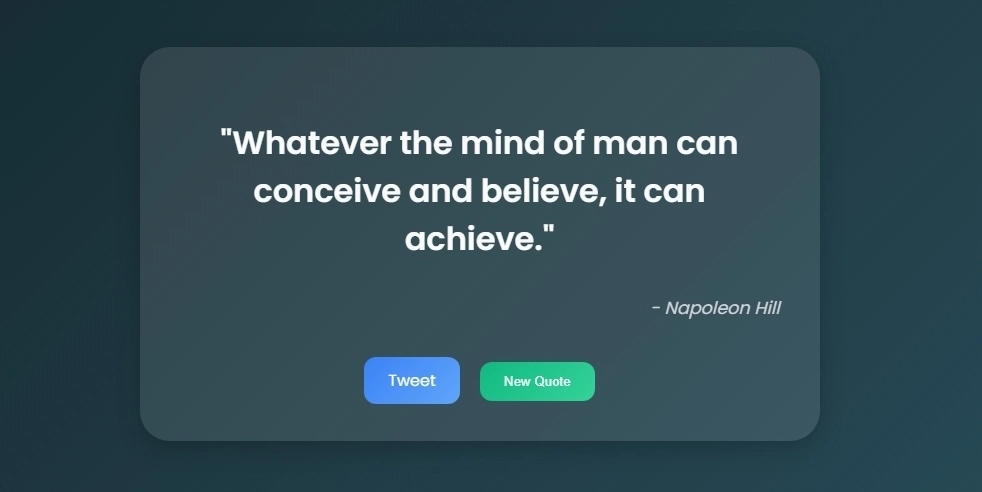Understanding Software Project Forking in Open Source: Dynamics, Challenges, and Future Perspectives
Abstract This blog post explores the multifaceted world of software project forking in open-source. It delves into the history, core concepts, and technical aspects of forking while weighing its advantages against inherent challenges. In addition, the post highlights real-world applications, funding strategies, community impacts, and the evolving future outlook in the realm of open-source projects. By combining insights from the original article and additional resources, this comprehensive guide offers technical clarity and practical perspectives for developers, project managers, and stakeholders. Introduction Software project forking is a cornerstone of open-source development. In its simplest form, forking allows developers to diverge from an established codebase to pursue alternative development goals. This technique not only fuels innovation and adaptation in technology but also poses challenges such as community fragmentation and resource duplication. In today’s ecosystem of collaborative software development, understanding the dynamics behind forking is more vital than ever. This post explains why forking is relevant, highlights its benefits and drawbacks, and provides insights into future trends like ethical funding and blockchain-based licensing. Background and Context Forking has been a prominent feature in open-source projects since the early days of collaborative coding. To put it simply, a fork is created when developers take a copy of an existing project and then modify it to suit their own vision. A classic example is the evolution of the XFree86 project into X.Org, where a significant fork led to a modernized desktop environment. Historically, the open-source philosophy has always championed freedom, collaboration, and adaptability. As software ecosystems grew, the need for different development paths became essential. Today’s marketplace requires projects to be flexible and responsive to community needs; hence, forking is seen not as a betrayal, but as an inevitable component of innovation. However, with freedoms come responsibilities and risks. For a deeper dive into these risks, readers should explore the discussion on forking project risks. Core Concepts and Features What Is Software Project Forking? In technical terms, software project forking is when a new development branch diverges from an existing codebase, enabling teams to experiment without affecting the original project. Key aspects include: Independence: Once a fork occurs, the new project operates independently. Adaptation: Developers adapt the original code to meet new requirements. Diversity: Forking often leads to a proliferation of different solutions to common problems. Advantages of Forking Forking is not only a mechanism for development but also a catalyst for positive change in the open-source ecosystem. Consider these benefits: Catalyst for Innovation: Forks free teams from legacy constraints, enabling bold changes. Notable instances include the transformation witnessed in projects like XFree86, which transitioned into X.Org. Conflict Resolution: Instead of halted progress due to internal disagreements, a fork provides a non-disruptive way to resolve conflicts. Increased Competition: Forking encourages a competitive environment where multiple versions of a project push each other to improve. Project Revitalization: Stagnant or abandoned projects can be revived by a new community that infuses fresh ideas and momentum. Bullet List of Key Advantages: Innovation Booster: Freedom to experiment. Conflict Mitigation: Lights a clear path during internal disagreements. Enhanced Competition: Drives overall quality improvements. Renewed Project Life: Revitalizes fading projects. Challenges of Forking Despite its many benefits, forking also introduces several challenges that developers must navigate: Community Fragmentation: When efforts diverge among multiple competing forks, the overall impact of development can get diluted. Duplication of Effort: Multiple teams working independently on similar features can lead to resource inefficiency. Reputational Concerns: Forks sometimes spark controversy within communities and challenge established norms. Volunteer Burnout: Many forks rely on unpaid contributors, making it difficult to achieve long-term project sustainability. Funding and Sponsorship Issues: Securing ongoing financial support for from-scratch projects can be a hurdle in ensuring longevity. Comparative Table: Advantages vs. Challenges of Forking Aspect Advantages Challenges Innovation Unrestricted experimentation and novel features emerge. Risk of fragmented innovation with overlapping efforts. Community Impact Offers multiple avenues for contributions and ideas. Can lead to diluted efforts and community splitting. Project Longevity Revives stagnant projects through new energy and focus. H

Abstract
This blog post explores the multifaceted world of software project forking in open-source. It delves into the history, core concepts, and technical aspects of forking while weighing its advantages against inherent challenges. In addition, the post highlights real-world applications, funding strategies, community impacts, and the evolving future outlook in the realm of open-source projects. By combining insights from the original article and additional resources, this comprehensive guide offers technical clarity and practical perspectives for developers, project managers, and stakeholders.
Introduction
Software project forking is a cornerstone of open-source development. In its simplest form, forking allows developers to diverge from an established codebase to pursue alternative development goals. This technique not only fuels innovation and adaptation in technology but also poses challenges such as community fragmentation and resource duplication. In today’s ecosystem of collaborative software development, understanding the dynamics behind forking is more vital than ever. This post explains why forking is relevant, highlights its benefits and drawbacks, and provides insights into future trends like ethical funding and blockchain-based licensing.
Background and Context
Forking has been a prominent feature in open-source projects since the early days of collaborative coding. To put it simply, a fork is created when developers take a copy of an existing project and then modify it to suit their own vision. A classic example is the evolution of the XFree86 project into X.Org, where a significant fork led to a modernized desktop environment.
Historically, the open-source philosophy has always championed freedom, collaboration, and adaptability. As software ecosystems grew, the need for different development paths became essential. Today’s marketplace requires projects to be flexible and responsive to community needs; hence, forking is seen not as a betrayal, but as an inevitable component of innovation. However, with freedoms come responsibilities and risks. For a deeper dive into these risks, readers should explore the discussion on forking project risks.
Core Concepts and Features
What Is Software Project Forking?
In technical terms, software project forking is when a new development branch diverges from an existing codebase, enabling teams to experiment without affecting the original project. Key aspects include:
- Independence: Once a fork occurs, the new project operates independently.
- Adaptation: Developers adapt the original code to meet new requirements.
- Diversity: Forking often leads to a proliferation of different solutions to common problems.
Advantages of Forking
Forking is not only a mechanism for development but also a catalyst for positive change in the open-source ecosystem. Consider these benefits:
- Catalyst for Innovation: Forks free teams from legacy constraints, enabling bold changes. Notable instances include the transformation witnessed in projects like XFree86, which transitioned into X.Org.
- Conflict Resolution: Instead of halted progress due to internal disagreements, a fork provides a non-disruptive way to resolve conflicts.
- Increased Competition: Forking encourages a competitive environment where multiple versions of a project push each other to improve.
- Project Revitalization: Stagnant or abandoned projects can be revived by a new community that infuses fresh ideas and momentum.
Bullet List of Key Advantages:
- Innovation Booster: Freedom to experiment.
- Conflict Mitigation: Lights a clear path during internal disagreements.
- Enhanced Competition: Drives overall quality improvements.
- Renewed Project Life: Revitalizes fading projects.
Challenges of Forking
Despite its many benefits, forking also introduces several challenges that developers must navigate:
- Community Fragmentation: When efforts diverge among multiple competing forks, the overall impact of development can get diluted.
- Duplication of Effort: Multiple teams working independently on similar features can lead to resource inefficiency.
- Reputational Concerns: Forks sometimes spark controversy within communities and challenge established norms.
- Volunteer Burnout: Many forks rely on unpaid contributors, making it difficult to achieve long-term project sustainability.
- Funding and Sponsorship Issues: Securing ongoing financial support for from-scratch projects can be a hurdle in ensuring longevity.
Comparative Table: Advantages vs. Challenges of Forking
| Aspect | Advantages | Challenges |
|---|---|---|
| Innovation | Unrestricted experimentation and novel features emerge. | Risk of fragmented innovation with overlapping efforts. |
| Community Impact | Offers multiple avenues for contributions and ideas. | Can lead to diluted efforts and community splitting. |
| Project Longevity | Revives stagnant projects through new energy and focus. | High dependency on volunteer work may lead to burnout. |
| Resource Management | Encourages healthy competition among projects. | Duplication of work may waste limited resources. |
| Conflict Management | Provides a venue to resolve internal disagreements constructively. | Forks may breed controversy if not properly managed. |
Applications and Use Cases
Real-World Examples
The practical impact of forking can be seen in several landmark projects. A notable instance is the split from XFree86 to form X.Org, which modernized features essential for today’s desktop environments. Similarly, forks in popular libraries and frameworks have allowed adaptation to emerging technologies and security standards.
Funding and Business Models
Forking is often tied to broader discussions of open-source funding and business models. With models ranging from crowdfunding to institutional sponsorships, projects now have multiple avenues to secure the financial stability needed for sustained development. For more details, explore how innovative funding for open source projects is reshaping the landscape.
Case Study: Conflict Resolution through Forking
Consider a scenario where a development team splits due to creative differences. Instead of halting the project entirely, a fork is initiated that allows one group to pursue its vision independently. This approach not only maintains progress but encourages a diversity of solutions, each of which might later contribute to the refinement of the original project. As discussed in posts like this Dev.to article, community-driven projects have often navigated such splits successfully.
Challenges and Limitations
While the dynamics of forking offer significant benefits, they also require careful management. Below are some technical and adoption challenges:
- Technical Fragmentation: A fork, when not synchronized with its parent project, may eventually become incompatible with heritage libraries and dependencies. This fragmentation can hinder interoperability among projects.
- Resource Reallocation: Developers and maintainers might inadvertently duplicate efforts, making it difficult to pool resources effectively. The outcome is slower progress and potentially critical vulnerabilities.
- Governance and Licensing Issues: Maintaining consistency across different forks can be challenging, especially when multiple interpretations of open-source licenses come into play. Consider the intricacies described in ethical software development guidelines and best practices reviewed in open source project business models.
- Open-Source Sponsorship and Funding: Acquiring continuous funding remains a hurdle for many forks. Sustainable models such as those discussed under sustainable funding for open source and insights from exploring open source developer funding strategies are critical.
Future Outlook and Innovations
Trends in Forking and Open-Source
The future of software forking will be significantly influenced by emerging trends:
- Blockchain and Tokenization: The integration of blockchain in open-source funding is promising a revolution in license management and financial sustainability. Platforms are already exploring ways to tokenize licenses to ensure transparency and fairness, as highlighted in discussions around license-token revolutionizing OSS license distribution.
- Ethical Funding Models: The emphasis on ethical funding and transparent sponsorship arrangements is increasing. Ensuring that contributors are fairly compensated while maintaining community goodwill is a topic of growing importance.
- Enhanced Governance Structures: With the rise of decentralized governance models, forks may soon benefit from new frameworks that incorporate stakeholder voting and accountability measures. Projects utilizing systems similar to blockchain-based on-chain governance are charting new paths.
Innovations on the Horizon
In addition to improved funding models and governance structures, several technological advancements are shaping the future of forking:
- Automated Merging and Integration Tools: Tools that assist in managing code divergence can help reintegrate beneficial features from different forks, reducing the negative impacts of duplication.
- Better Collaboration Platforms: Enhanced platforms that promote community engagement, including well-organized contribution tracking and reward systems, promise a more unified development landscape.
- Hybrid Funding Mechanisms: Combining traditional crowdfunding with blockchain-enabled sponsorships may lead to more resilient financial models for forks, ensuring sustainability even during turbulent market conditions.
Bullet List of Future Innovations:
- Blockchain-based license management
- Automated merging tools to reduce code divergence
- Enhanced community engagement platforms
- Hybrid funding models combining traditional and crypto-based sponsorships
Summary
Software project forking is an essential and dynamic aspect of open-source development. It allows developers to innovate, resolve conflicts, and revitalize abandoned projects while presenting challenges such as community fragmentation, duplication of efforts, and lengthy funding hurdles. As we move into a future where blockchain technology, ethical funding, and advanced collaboration tools play a more prominent role, understanding the dynamics of forking becomes not just a theoretical exercise, but a practical necessity for sustainable software development.
We have delved deep into the process—from its historical context and core benefits to practical use cases and challenges. By comparing advantages and limitations using structured tables and bullet lists, we have painted a comprehensive picture of what forking entails. As new technologies and governance structures begin to merge with open-source principles, the evolution of software forking will continue to play a pivotal role in shaping the broader ecosystem.
For those interested in further exploring these topics, consider reading more on ethical funding methods and community engagement strategies. Additionally, the opensource.guide is an excellent resource for foundational principles and advanced strategies in open-source software.
Additional Resources and References
- Understanding Software Project Forking in Open Source
- Forking Project Risks
- Innovative Funding for Open Source Projects
- Ethical Software Development
- Open Source Project Business Models
- Sustainable Funding for Open Source
- Exploring Open Source Developer Funding Strategies
- License Token Revolutionizing OSS License Distribution
In conclusion, as the open-source community continues to innovate and adapt, software project forking remains a double-edged sword: a powerful mechanism for growth and creativity, but one that requires careful navigation to overcome the inherent challenges. By understanding these dynamics and embracing emerging trends, developers and communities are well-equipped to lead a new era of sustainable, collaborative, and innovative technology.
Embracing change and maintaining an agile mindset are critical for moving forward in the ever-evolving world of open-source development.























![[Exclusive] Infinix GT DynaVue: a Prototype that could change everything!](https://www.gizchina.com/wp-content/uploads/images/2025/05/Screen-Shot-2025-05-10-at-16.07.40-PM-copy.png)















































![Beats Studio Buds + On Sale for $99.95 [Lowest Price Ever]](https://www.iclarified.com/images/news/96983/96983/96983-640.jpg)

![New iPad 11 (A16) On Sale for Just $277.78! [Lowest Price Ever]](https://www.iclarified.com/images/news/97273/97273/97273-640.jpg)



























-xl.jpg)


















































































































































































































![[The AI Show Episode 146]: Rise of “AI-First” Companies, AI Job Disruption, GPT-4o Update Gets Rolled Back, How Big Consulting Firms Use AI, and Meta AI App](https://www.marketingaiinstitute.com/hubfs/ep%20146%20cover.png)

































































































































































![Ditching a Microsoft Job to Enter Startup Purgatory with Lonewolf Engineer Sam Crombie [Podcast #171]](https://cdn.hashnode.com/res/hashnode/image/upload/v1746753508177/0cd57f66-fdb0-4972-b285-1443a7db39fc.png?#)


![[FREE EBOOKS] Offensive Security Using Python, Learn Computer Forensics — 2nd edition & Four More Best Selling Titles](https://www.javacodegeeks.com/wp-content/uploads/2012/12/jcg-logo.jpg)



















































































.jpg?width=1920&height=1920&fit=bounds&quality=70&format=jpg&auto=webp#)













